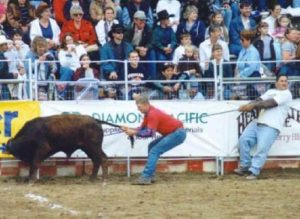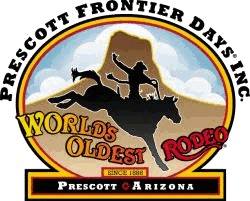Is the Rodeo coming to your town?
Rodeo animals are generally tame creatures who must be provoked into battle. 
They live lives filled with stress and fear.
Contestants practice their games on numerous calves, bulls, and horses, injuring and killing many animals before even entering the ring.
A contestant’s score is based on how long he can ride a struggling animal or how quickly he can overpower an animal.
Sprains, broken bones, muscle pulls, saddle blisters, spur wounds, flank strap wounds, punctured lungs, broken ribs, hematomas, bruising, and broken necks are common.
 Wounded animals are quickly removed while the rodeo announcer and rodeo clowns distract the public.
Wounded animals are quickly removed while the rodeo announcer and rodeo clowns distract the public.
The animals who become too injured to participate are sent to slaughter.








